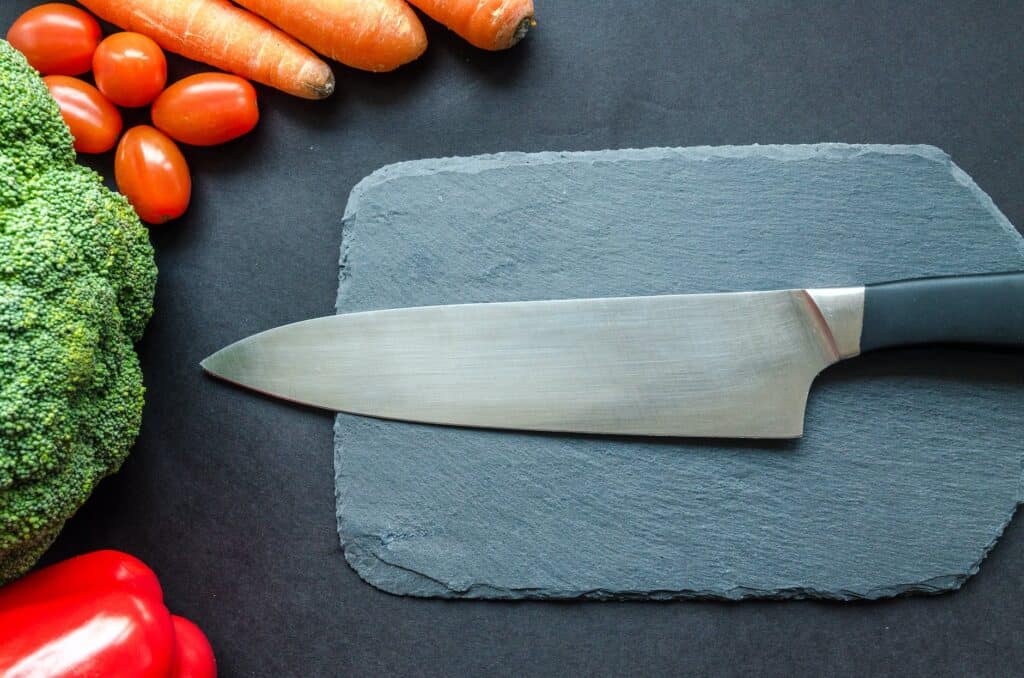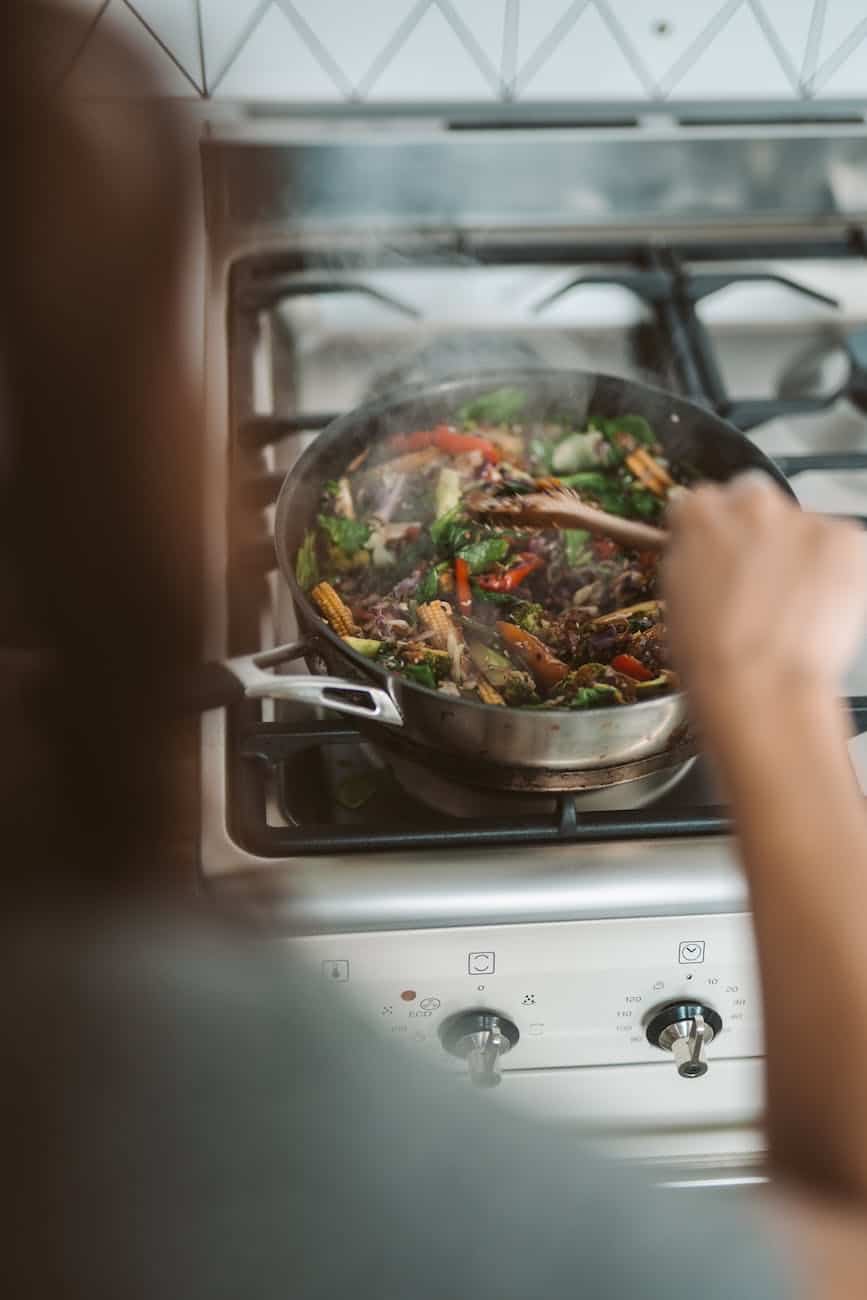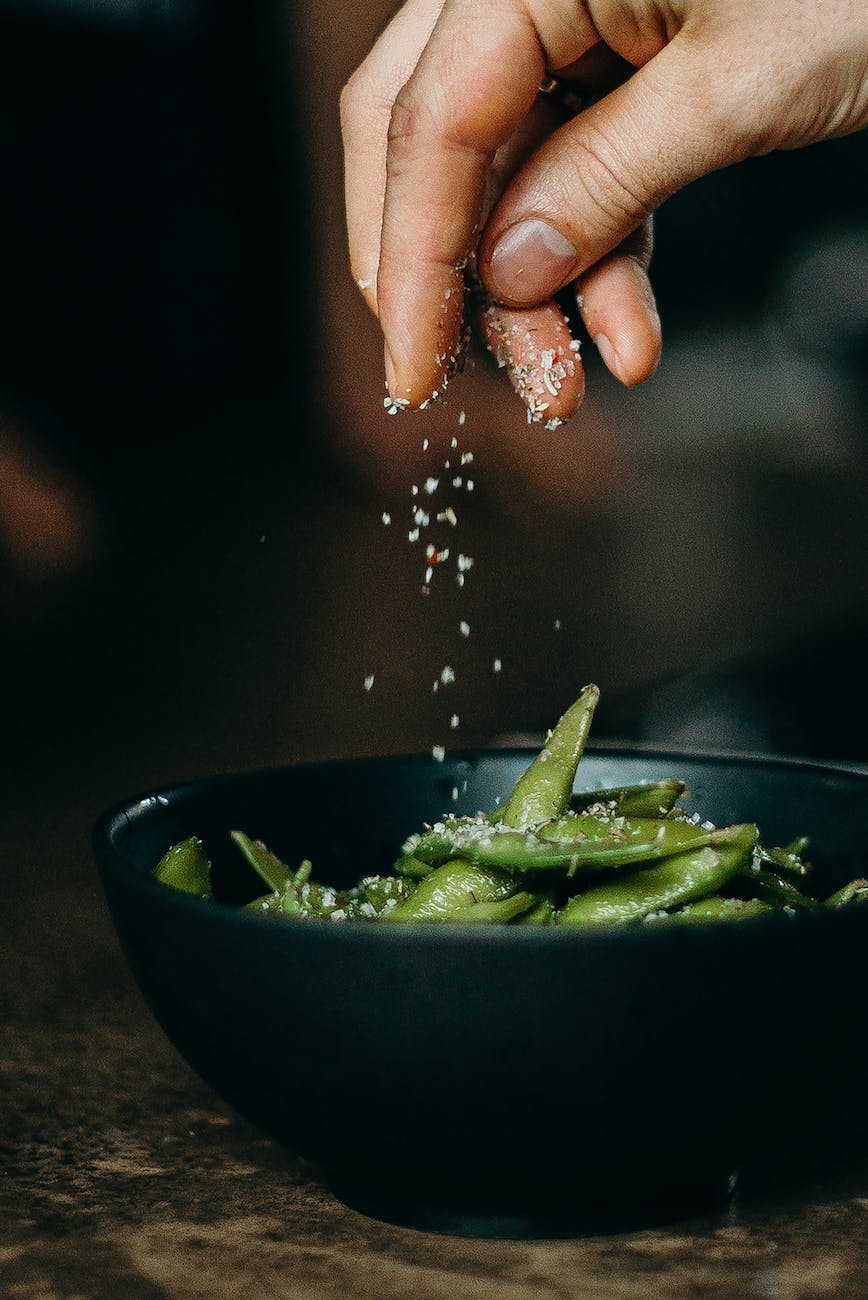Last updated: June 4th, 2024
This post may contain affiliate links. As Amazon Associates and through other affiliate programs, we earn from qualifying purchases if you click on a link – at no extra cost to you. We only promote products we actually use and truly love!
Uncovering the meaning of intuitive cooking to help you take advantage of this invaluable skill in your own kitchen.
Have you ever followed a recipe that tells you to cook something on medium-high heat for 20 minutes, only to end up with a charred and overcooked dinner that looks nothing like the photo? This struggle is all too common, and it’s likely because most of us home cooks never learned to cook intuitively.
Intuitive cooking is a concept that’s become second nature to us since we first learned it, and we’ve quickly realized it’s an invaluable skill. Before we actually learned what it meant, we were mostly relying on what recipes (and search engines) told us we should be doing. But once we began to use our 5 senses to tell if we were doing the right thing, our confidence in the kitchen skyrocketed and cooking became so much easier and more exciting.
If this sounds familiar and you want to improve your cooking skills, keep on reading to learn why you should learn to cook intuitively, too – and how to do it!

What Is Intuitive Cooking And Why Is It Important?
Intuitive cooking is a technique we first learned about from Chef Roy Choi’s Masterclass. Essentially, it’s the idea of using your senses to guide your cooking, rather than trying to follow a recipe word for word.
You might be wondering, why should I learn to cook intuitively when I can just follow recipes I find online? Here’s the truth: a recipe alone cannot guarantee successful results. Recipes are only as good as the ingredients you choose and your know-how in the kitchen, since there are too many outside variables that can affect the final outcome.
For instance, consider all the decisions that go into cooking a simple dinner of chicken and vegetables:
- What kind of produce do you buy? What size is it? How fresh is it? Is it overripe, or underripe? Was it locally sourced? Is it organic?
- What is the quality of the chicken you’re going to use? Did you buy it fresh from the butcher, or is it from a brand-name value pack you bought earlier this week? Or did you take some chicken out of the freezer and defrost it overnight for this recipe?
- What kind of stove or oven will you be using – gas, electric, or induction?
- What kind of pans do you own? Will you use aluminum, stainless steel, cast iron, or something else?
This list could go on and on! While high quality recipes will generally specify what types of ingredients you should look for and what kind of cookware works best, you don’t always know how the recipe creator originally cooked the meal. You might not always have the type of cookware they recommend, or be able to use the same type of stove.
Realizing that all of these factors can change how a recipe turns out is the first step to recognizing why intuitive cooking is so important. When you rely on your senses to tell you if something is cooking properly instead of fretting over exactly what the recipe tells you to do, you gain much more control over the final result, no matter what the external variables are.
Basically, intuitive cooking gives you the ability to cook something great under any circumstances – in any kitchen, with any type of equipment, and with whatever ingredients you may have access to.

Okay, So How Do I Cook Intuitively?
Intuitive cooking is exactly what it sounds like – use your intuition! Meaning, our 5 senses can tell us whether or not we’re getting the results we want while cooking. Here’s how to use each of your senses to become a more intuitive home cook, and therefore a more confident home cook.
Smell
Your nose is one of the best kitchen tools at your disposal, and one of the most important senses to use when cooking intuitively. One obvious example is that it’s pretty easy to tell when something’s burning – if you smell a little smoke or too much char, that’s a sign to turn the heat down or pull your food out of the oven!
But smell isn’t just an indicator of overcooking. Learn what different ingredients smell like as they cook, and you’ll start to associate certain aromas with recipe cues. For example, when we caramelize the sweet potatoes for our sweet potato black bean rice bowl recipe, we know it’s time to lower the heat once the potatoes start to smell super sweet. In combination with other sensory cues, like the coloring on the outside of the potatoes, you can start to understand where the food is at in its cooking process. Over time, this helps you fine-tune your ability to cook something perfectly, instead of ending up with an undercooked – or overcooked – dinner.
Sound
When we’re cooking on a stovetop, sound is one of the best indicators of how things are going. Think about searing chicken – if the pan is properly preheated, you’ll instantly hear sizzling as soon as the meat touches the pan. If you don’t, that’s a great indicator that you didn’t wait long enough for the pan to heat up.
Similarly, sizzling can tell you if you need to adjust the heat while cooking. All stoves are a little bit different, especially when it comes to gas vs. electric. What “medium to high heat” is on your stove may be different from a “medium to high heat” on some other stove. Using sensory cues to know if you’re cooking something at the right heat is an invaluable skill, especially if you want to be able to cook in different kitchens with ease.
If you’re making a stir fry and cooking at high heat, you want to hear those vegetables sizzling the whole time. But if you’re making something like shakshuka and simmering the sauce while the eggs cook, you don’t want to hear a whole lot – something cooking at a low temperature shouldn’t make much noise! Again, this is a skill that will develop over time. Practice paying attention to the sounds while you cook, and noticing what you get as a result, and eventually those associations will become second nature.
Taste
Taste is a wonderful source of information when cooking, especially when it comes to making sauces, soups, or stews. Really, any dish where you can make adjustments as you’re cooking benefits from a taste test here and there (obviously, don’t taste raw or undercooked meat). Not only does it help you understand and adjust for flavor, but also for texture.
For instance, maybe you’re cooking a flavorful tomato soup. You’ve added all the ingredients and it’s been simmering for a bit, but you’re not quite sure if it’s done yet. Give it a taste, and think about the flavors. Are they balanced? Are they potent enough? If not, you can adjust by adding other seasonings to balance the flavors, or letting the soup simmer a bit longer to help the flavors develop more.
You can also think about texture while taste-testing the soup. Maybe you accidentally added too much water and you want it to be a little thicker. You can either simmer it for a longer time, or add ingredients like tomato paste or heavy cream to thicken it up. Once you make a change, however, taste test again! Taste your cooking over and over, in between every little adjustment you make, so that you can learn how that single change affected the dish. Continue this process of changing and tasting until you find that perfect balance of texture and flavor.
Sight
What you see is another helpful indicator of how things are cooking, and what adjustments you might need to make to ensure successful results. There are many visual cues, from color to char marks to visibly chunky versus smooth textures, that can tell us what’s going on with our recipe.
Let’s say you’re making homemade tortilla chips. You follow the recipe, cooking them in oil at medium-high heat for about 1 minute per side. You know they should be a beautiful golden-brown when they’re done frying, but for some reason they’re burnt around the edges and the color seems too dark. Those visual cues should be like warning bells in your head, telling you that you’re either cooking at too high of a heat, for too long, or both! On the next batch, try a lower heat, or cooking for less time, and see what happens. Note the color of the tortilla chips and if anything changed. Chances are, they’ll at least be closer to the right color this time.
So even though the recipe told you to do one thing, it didn’t necessarily yield the right results – probably because you have a different type of stove, you’re using a different pan, or even a different brand of oil than the person who made the recipe. Noticing something like color while cooking and being able to adjust on the fly will help you achieve more consistent results time after time.
Touch
Finally, our sense of touch can be a useful tool when cooking, too. Not in the sense that you should actually touch the food you’re cooking (please, definitely don’t do this with anything hot!), but in the sense that how things “feel” can tell you a lot.
Sometimes, it’s okay to use your hands. Like when you’re mixing up meatballs and you want to make sure the breadcrumbs are evenly distributed. But most of the time, you’ll want to touch your food with utensils – like a fork, a spoon, tongs, or a spatula – to tell if there’s been a transformation.
When cooking potatoes, you can prod them with a fork to see if they’re tender (the tines should easily slide into the potato with little resistance). When searing chicken, there should be a slightly tough crisp around the outside, noticeable if you gently poke at it with a pair of tongs (versus the squishy texture of raw chicken). When making a sauce, use a spoon to tell if it’s too thick or too thin (how easy is it to scoop? Does it drizzle off the spoon at all, or stay stuck?).
When you learn to use cooking utensils as an extension of yourself, you can still use your sense of touch as an intuitive cooking skill.

TL;DR: Why You Should Learn To Cook Intuitively
Intuitive cooking gives you the ability to confidently make adjustments while cooking, even if you’re following someone else’s recipe, and produce consistently delicious results. Recipes are a great starting point, but they can’t always be taken at face value since there are so many variables to consider (too many to put in a recipe) that may change the outcome. As you learn to cook using your 5 senses, you’ll become more and more confident in your own cooking skills – and your ability to cook in any kitchen, with any set of tools and ingredients.
Remember, it does take time to develop this skill. But the more you practice, the easier it’ll become, and the more you’ll want to be in the kitchen. We promise it’s worth it!
So what are you waiting for? Start cooking intuitively next time you make dinner, and before you know it you’ll feel like a Top Chef.
If you found this article interesting, check out Roy Choi’s Masterclass on Intuitive Cooking here. A Masterclass subscription is only $120 a year (that’s less than 50 cents a day!) and gives you unlimited access to lessons from world-renowned experts in any field you can imagine. Including plenty of cooking classes, for beginners and experienced cooks alike!
If you have any questions regarding the information presented in this post, please refer to our Nutrition Disclaimer here.
Looking for kitchen inspiration? Head over to our shop to see what we cook with every day, plus recommendations for foodie gifts and eco-friendly products.

Interesting! I’ve never heard of Intuitive Cooking. We always just called it “cooking”! There are times when I will follow a recipe word-for-word, but mostly I see recipes as a source of inspiration. My favorite meals begin with, “What ingredients do I have available, and what can I make with them?”
I love this – that’s exactly what recipes should be, a source of inspiration and something you can modify however you see fit! The “intuitive” part of it is just another tool to help beginner cooks learn to modify recipes successfully and confidently.